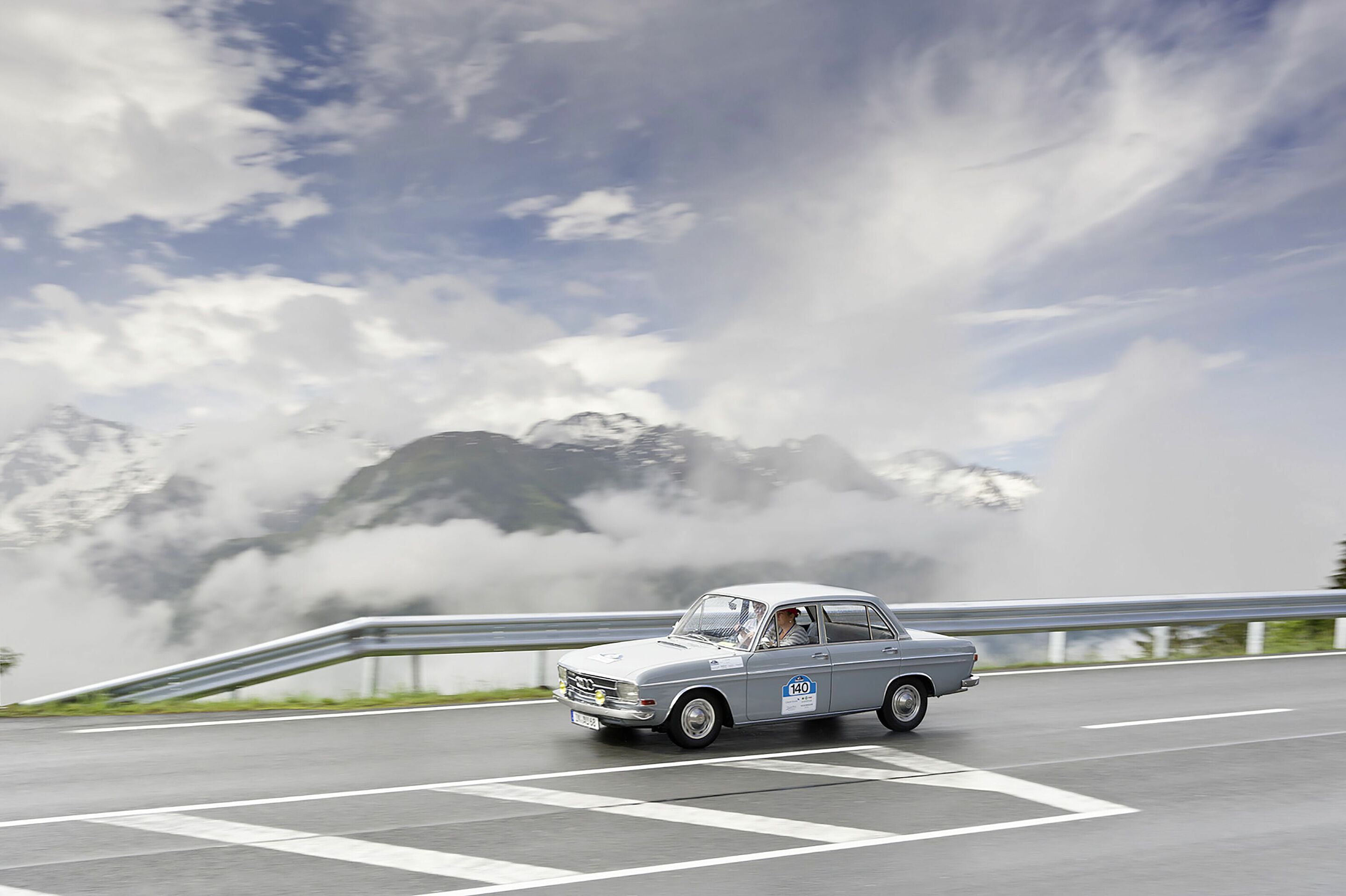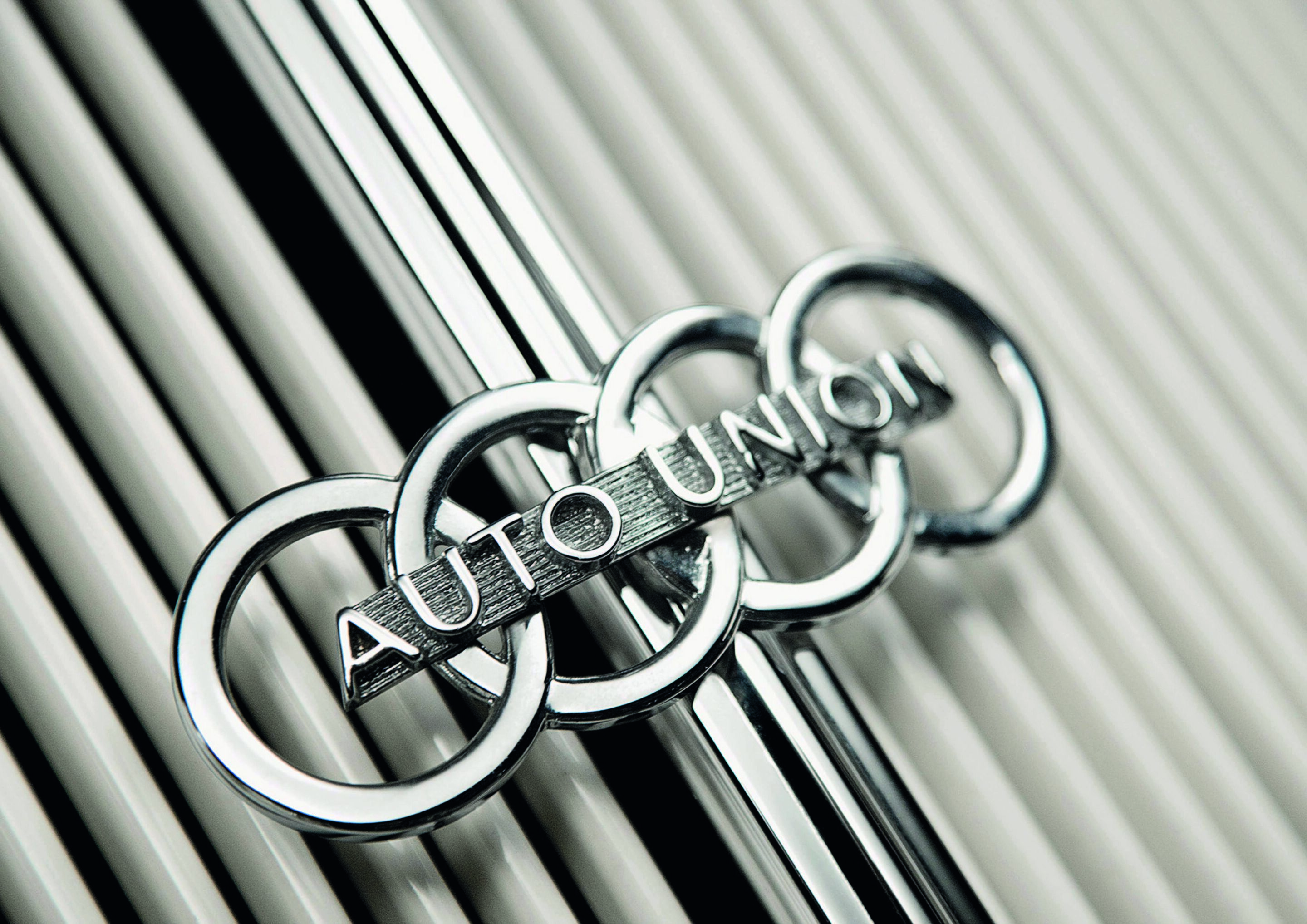Search
 Classic Car Season 2015 with Audi Tradition
Classic Car Season 2015 with Audi Tradition
In 1965, the company with the four rings, then still under the name of Auto Union GmbH, ended its era of two-stroke engines by bringing out a new model with a four-cylinder, four-stroke engine, which it called the Audi. Several of these first Audis after the Second World War will be making their way to the Danube Classic, being held around Ingolstadt.
The annual program kicks off with the Techno Classica vintage car show in Essen (April 15 to 19). The motto of the Audi stand in Hall 7 will be “The open top – 80 years of Cabrios and Roadsters.” Here, Audi will be displaying icons from the 1930s – from the Audi Front 225 to the DKW F5 Roadster to the Wanderer W 25 K. Furthermore, enthusiasts will also be able to see the Auto Union 1000 Sp Roadster from the 1960s and an Audi TT of the first generation. 180,000 visitors are expected at the world’s largest classic car show in Essen. Historic Auto Union Silver Arrows from the 1930s will be on the starting line at a total of three events this year. The 1939 Type D Double Compressor will be unleashing its 360 hp at the Hamburg Stadtpark Revival (September 5 and 6). The 1936 Type C will be sparking its 16 cylinders twice – both at the Classic Days show at Dyck Castle (July 31 to August 2) and at the Goodwood Festival of Speed, the world’s largest historic motor sports event. This will be held from June 25 to 28. Audi Tradition is not only sending the most powerful of its Silver Arrows onto the track; it will also be using this backdrop steeped in tradition to celebrate its first victory in the German Touring Car Championship (DTM) in 1990. The driver then was motor sports legend Hans-Joachim Stuck, who will be back behind the wheel of the original car – an Audi V8 DTM – at Goodwood. Audi Tradition will also be entering a motorbike in the race. The 1955 NSU Sportmax will be ridden by two-time motorcycle world championship runner-up Ralph Waldmann.
 History of the Four Rings
History of the Four Rings
Outstanding victories on international racetracks – with stars such as Hans Stuck, Achille Varzi and, above all, Bernd Rosemeyer at the wheel – soon made the Auto Union, although founded only a short time before, known to the public worldwide. The world speed record run on the Frankfurt-Darmstadt ‘autobahn’ in October 1937, with Rosemeyer driving a streamlined version of the car, aroused enormous interest: he was the first person to drive a car on a public highway at more than 400 kilometres an hour. The races for which these ‘Silver Arrows’ were entered in the 1930s soon created a legend. Mercedes-Benz and Auto Union were almost unbeatable on the world’s racing circuits. In 1938 a three-litre formula was adopted, and the Auto Union sent its Type D, with 485-hp V 12 engine, to the starting line. After the death of Bernd Rosemeyer in the course of a further world speed record attempt in January 1938, the Italian driver Tazio Nuvolari took his place as the leading Auto Union driver. In addition to the powerful publicity effect obtained from its Grand Prix racing activities, the Auto Union also entered DKW motorcycles for races and cross-country events; specially prepared DKW and Wanderer sports cars took part in long-distance races such as Liège-Rome-Liège and in off-road reliability trials. Centralisation Just as the Auto Union initially retained the well-established product programmes of its individual brands, so the new group at first allowed prevailing business structures to continue. In its first years the group was run from Zschopau (DKW). In 1936 a new administrative building was completed in Chemnitz. From 1935 on, in parallel with the individual factories’ development departments, a central design office (ZKB) and a central experimental establishment (ZVA) were set up there. They developed and tested the group’s new models and their components from that time on, applying proven scientific methods more frequently than had been done previously.